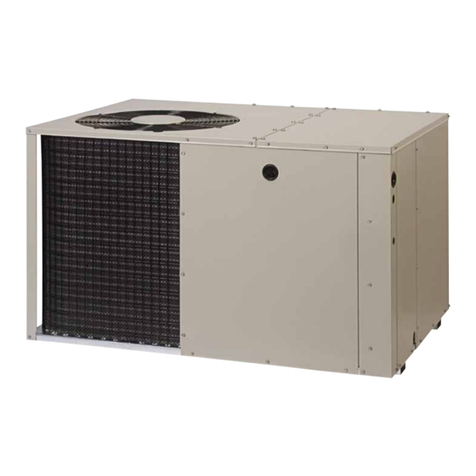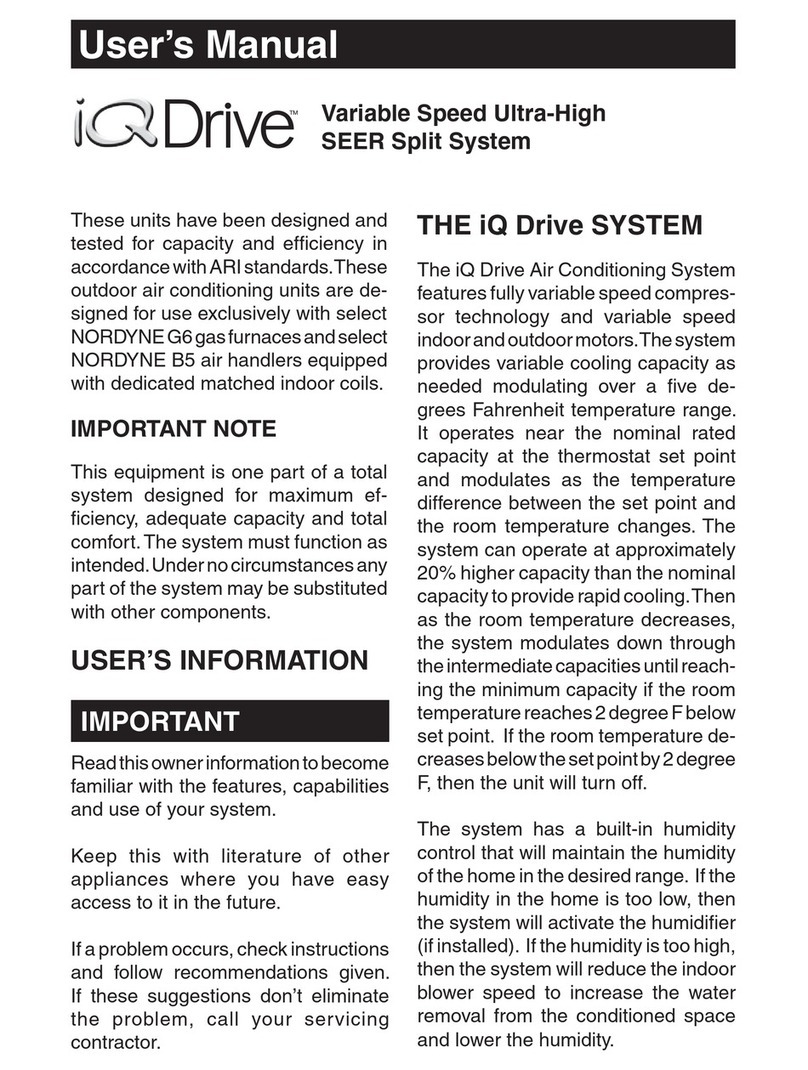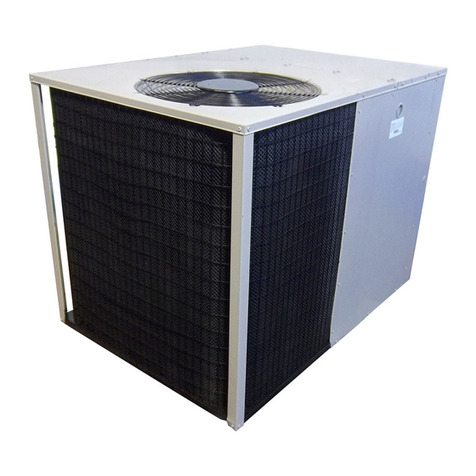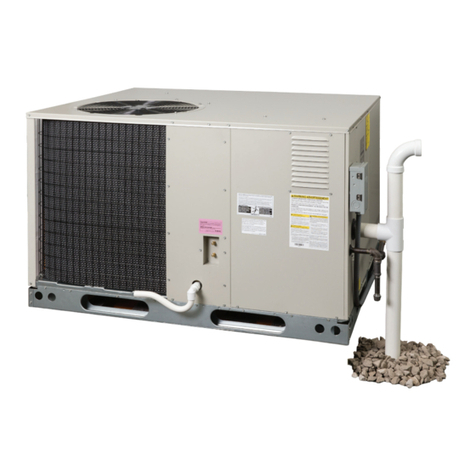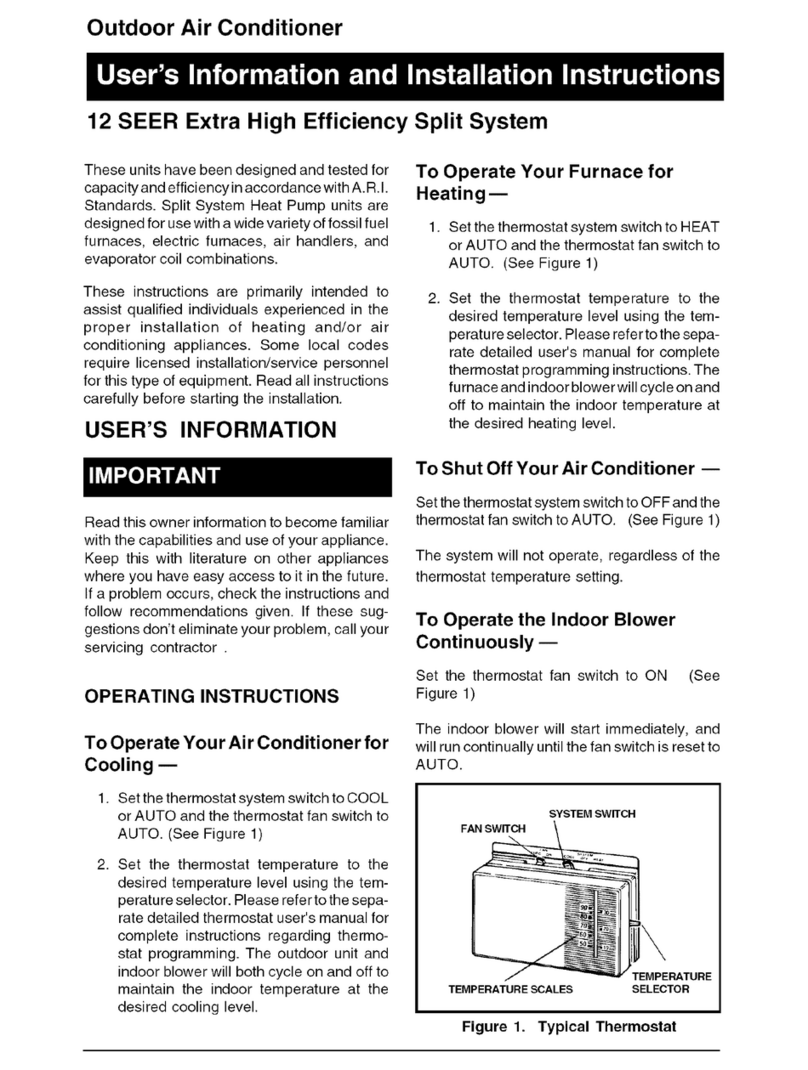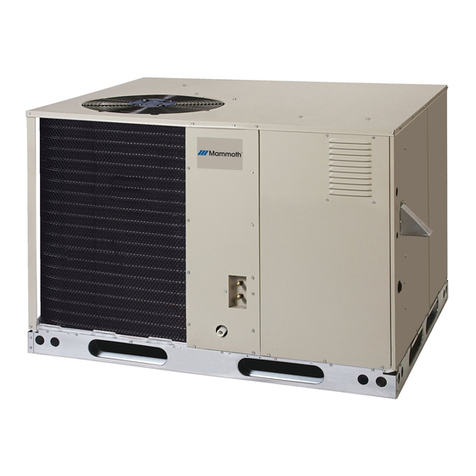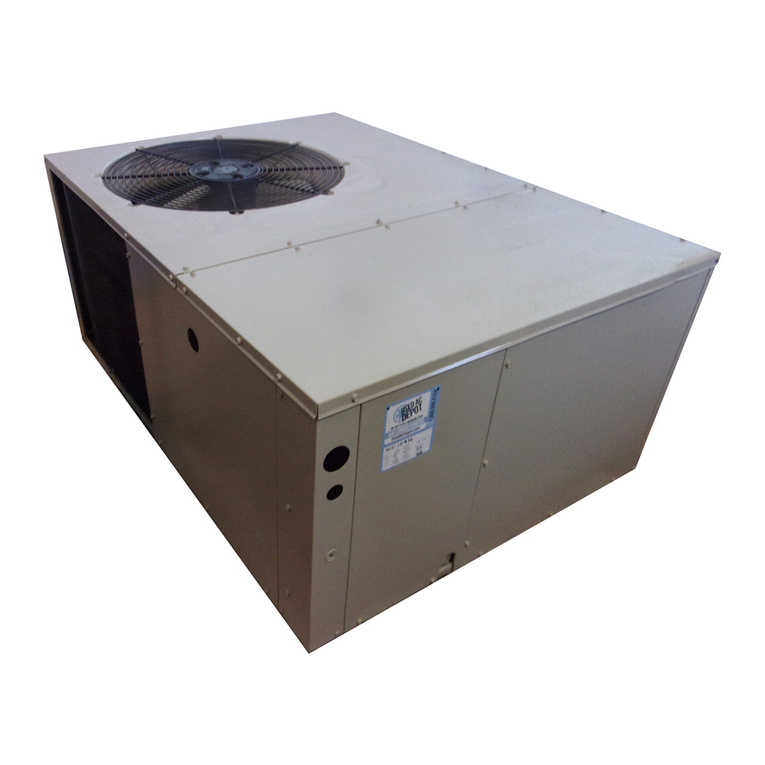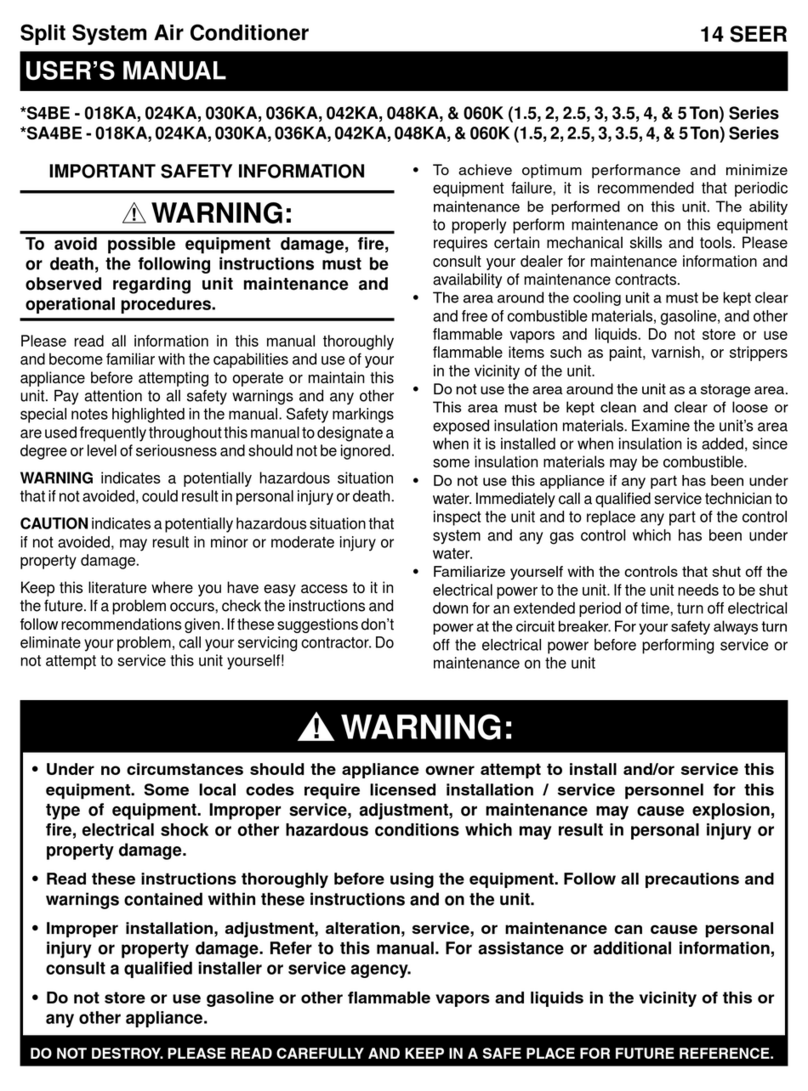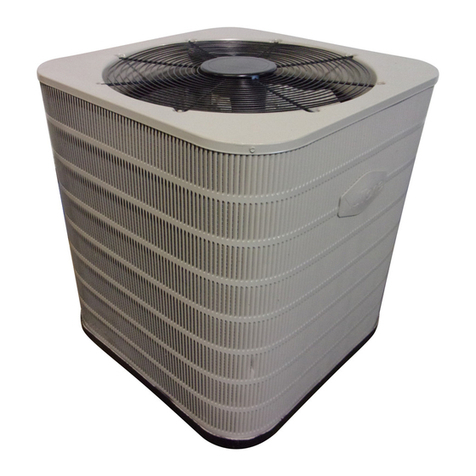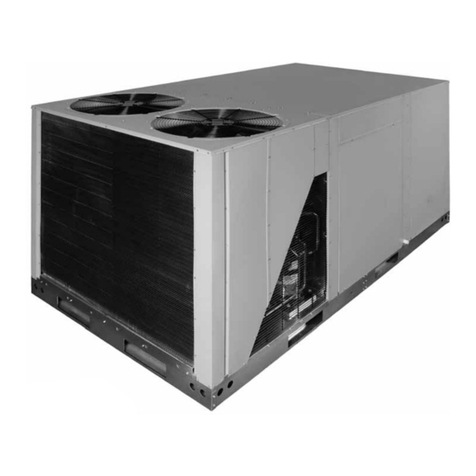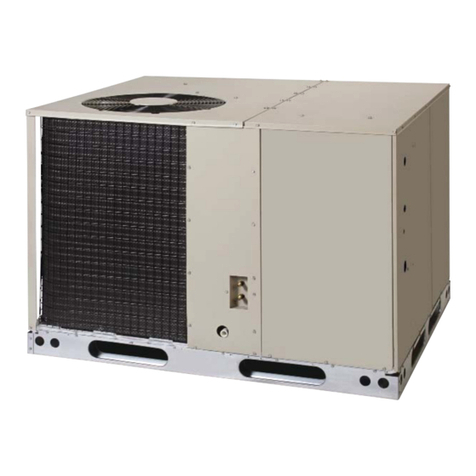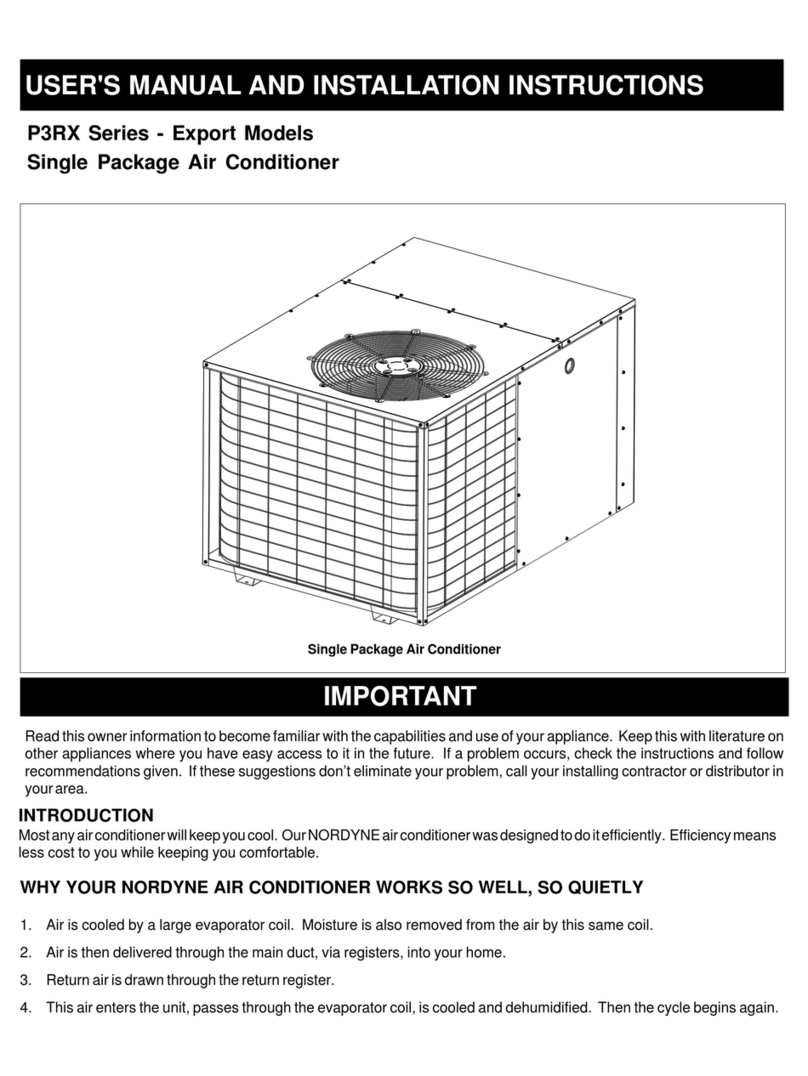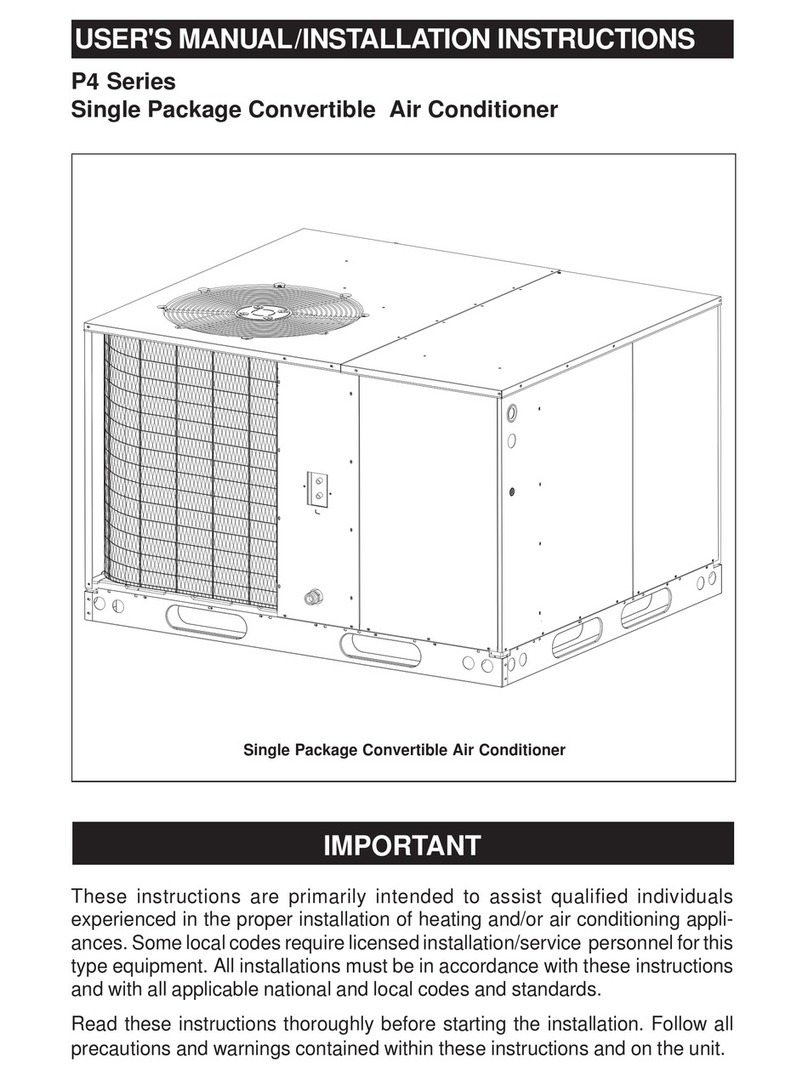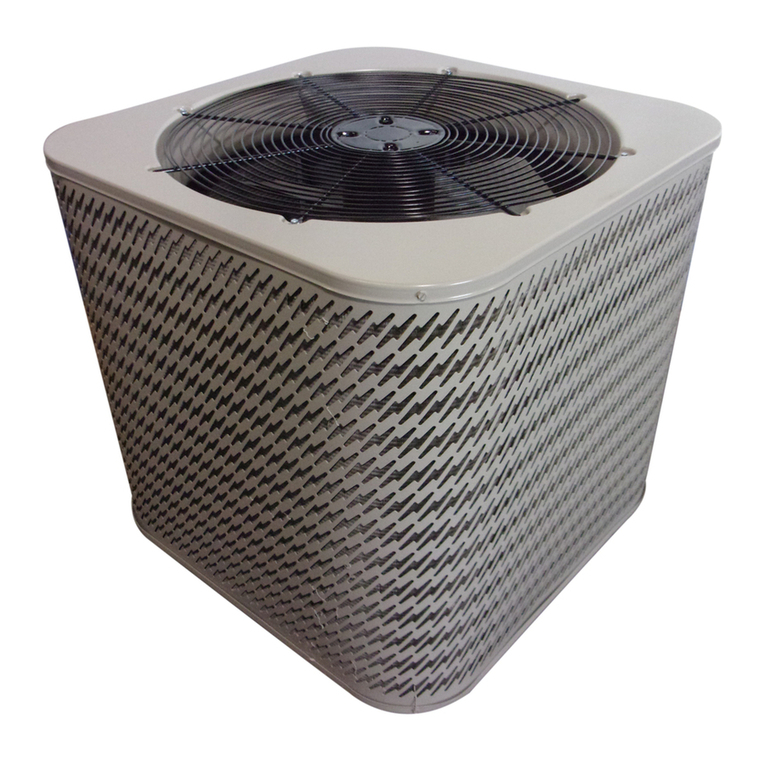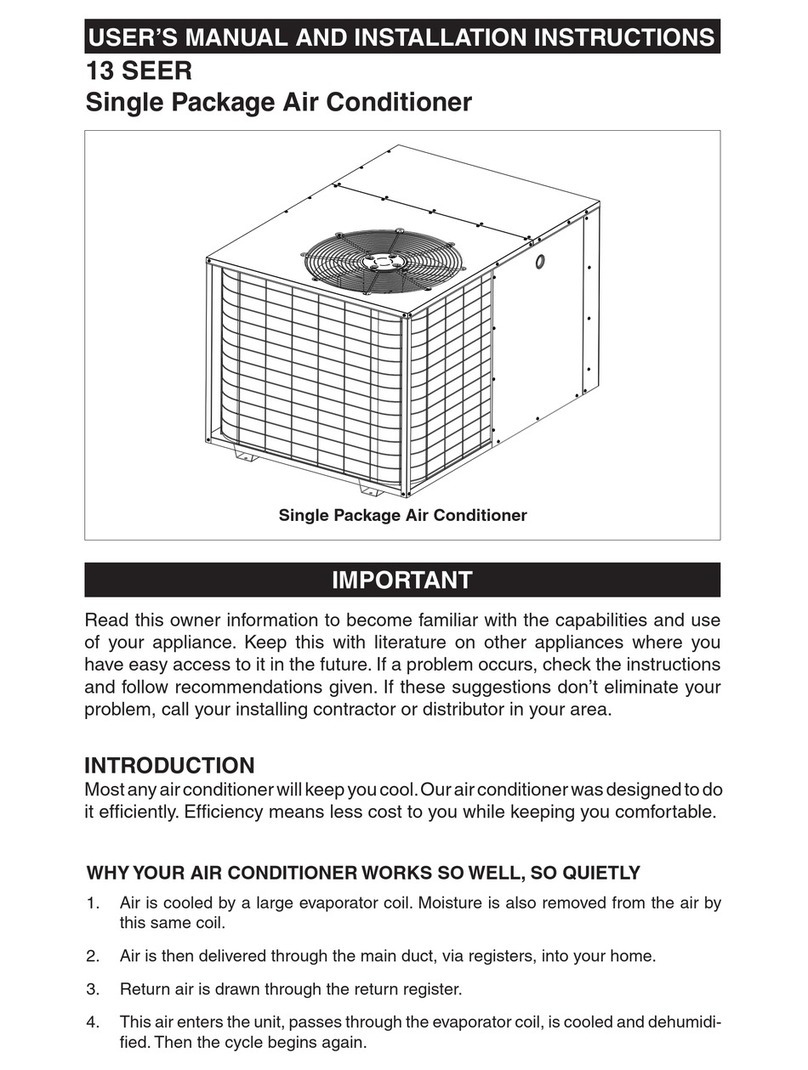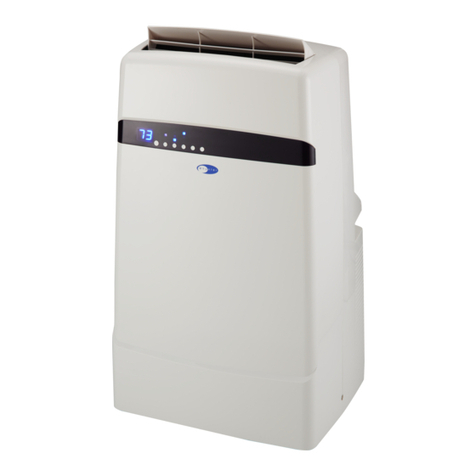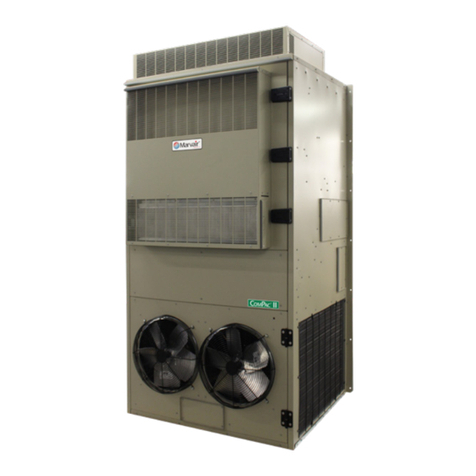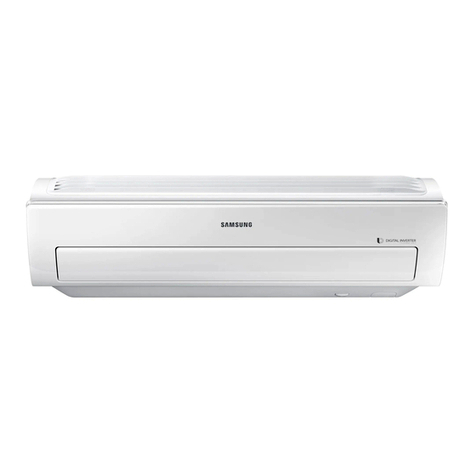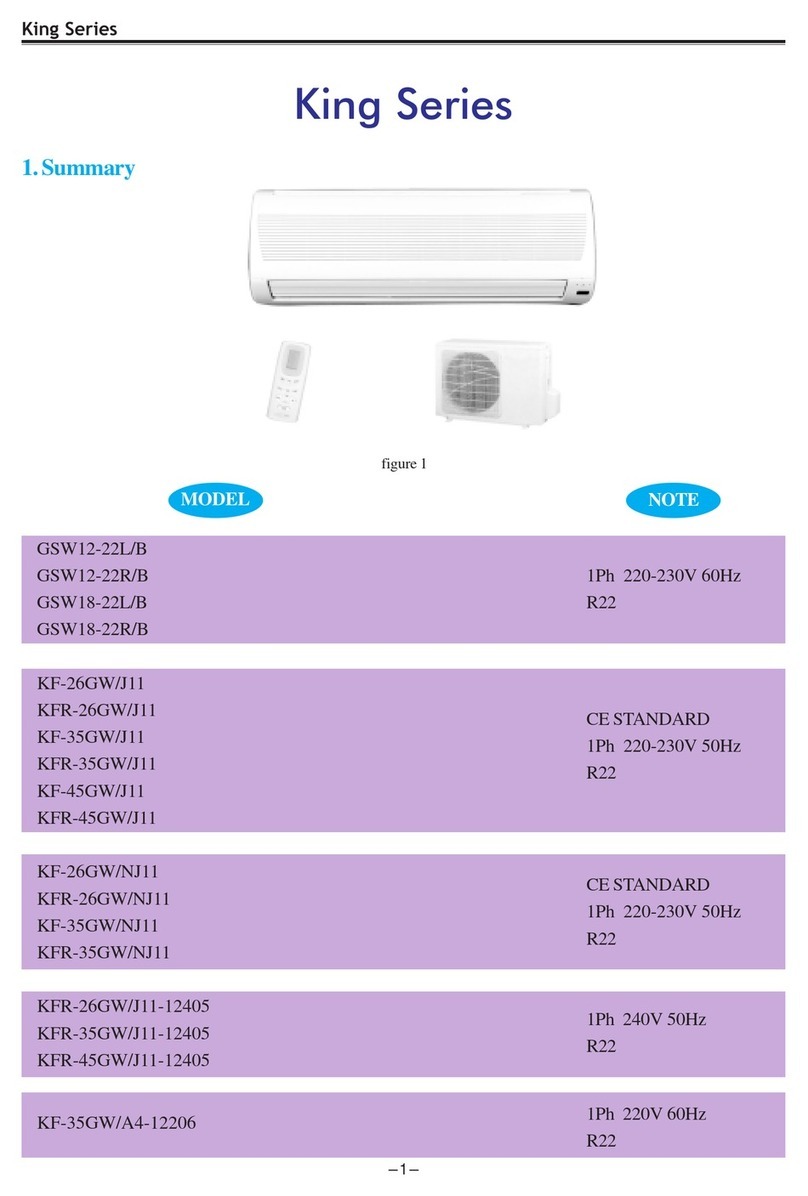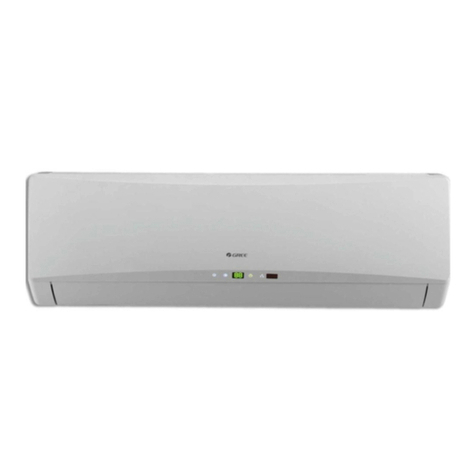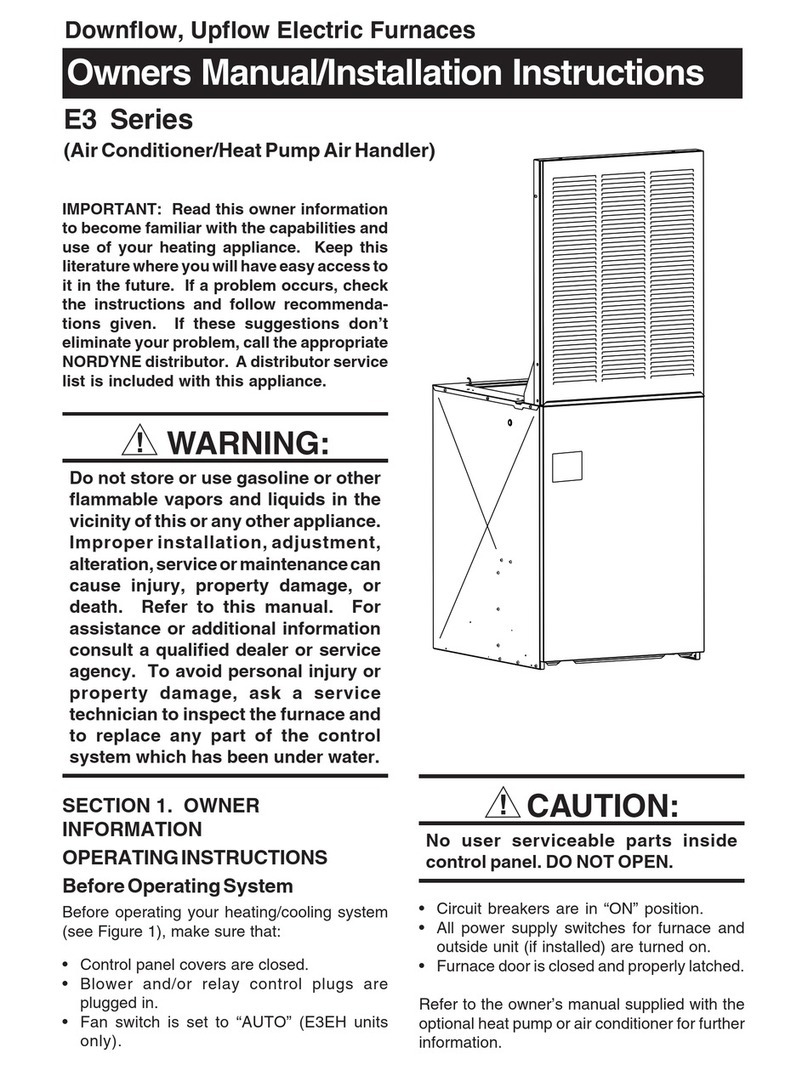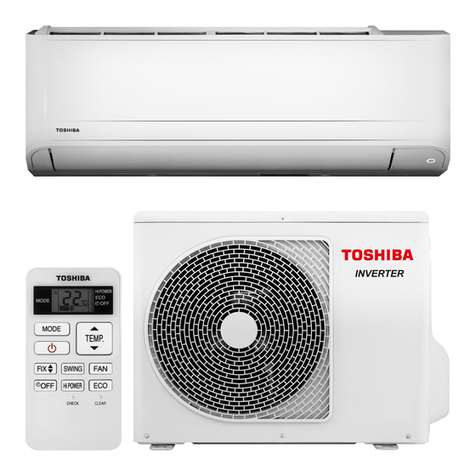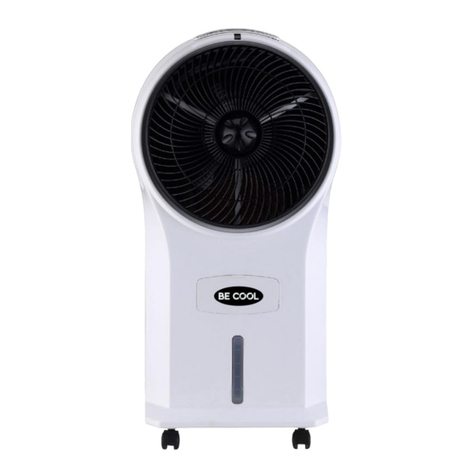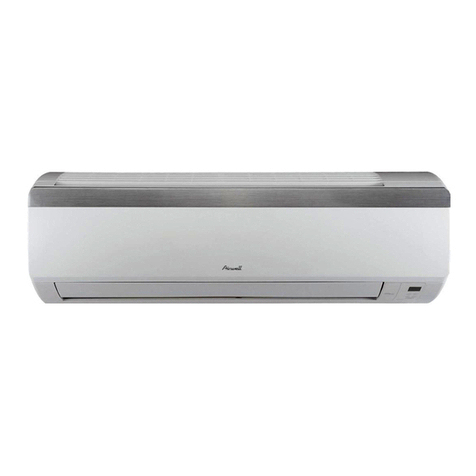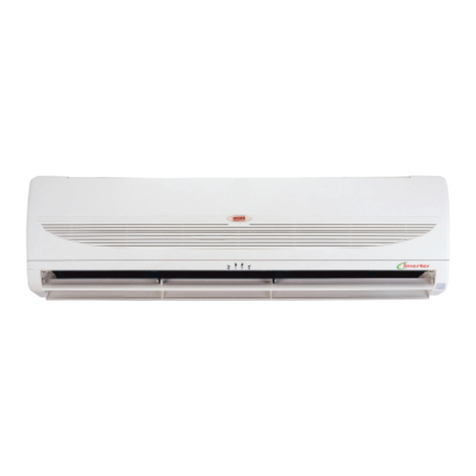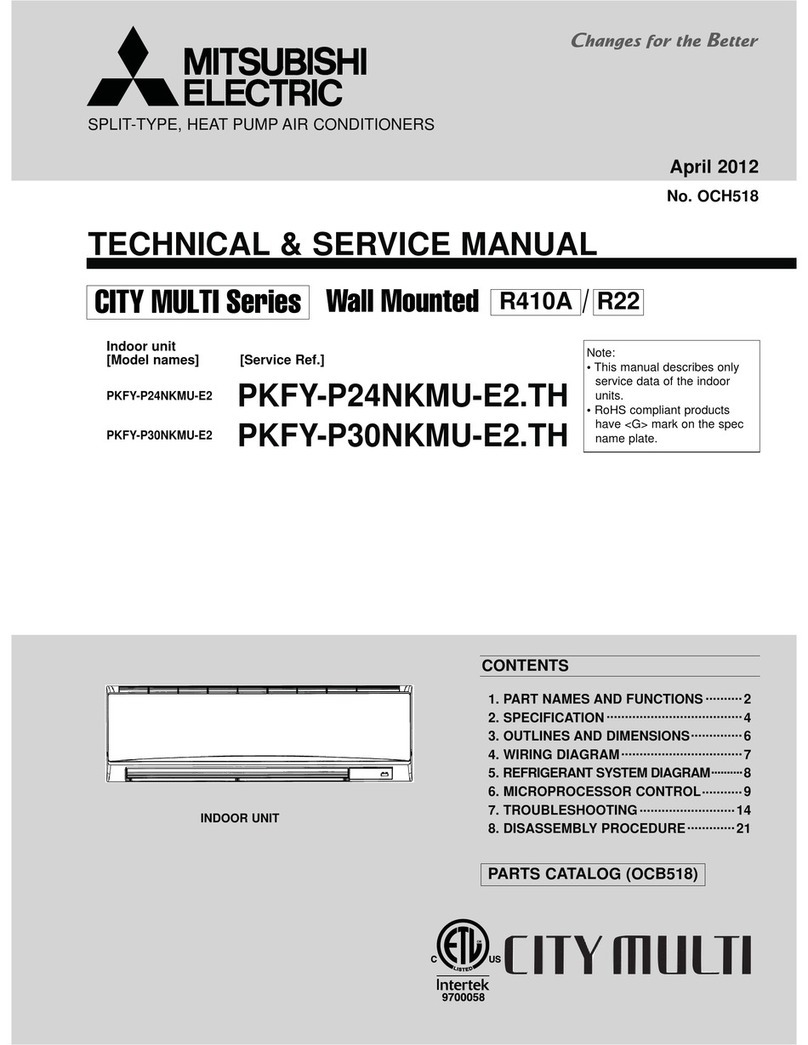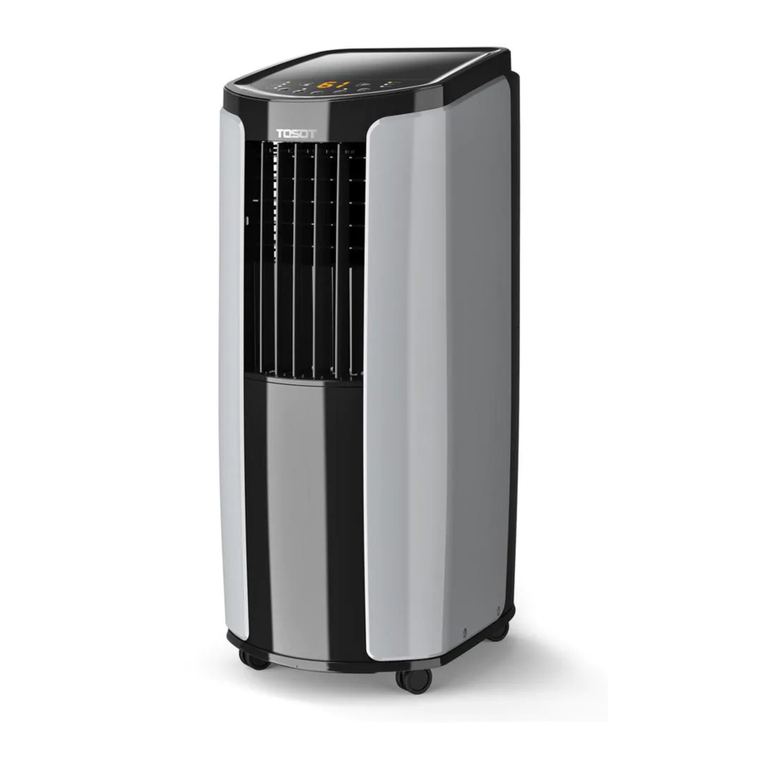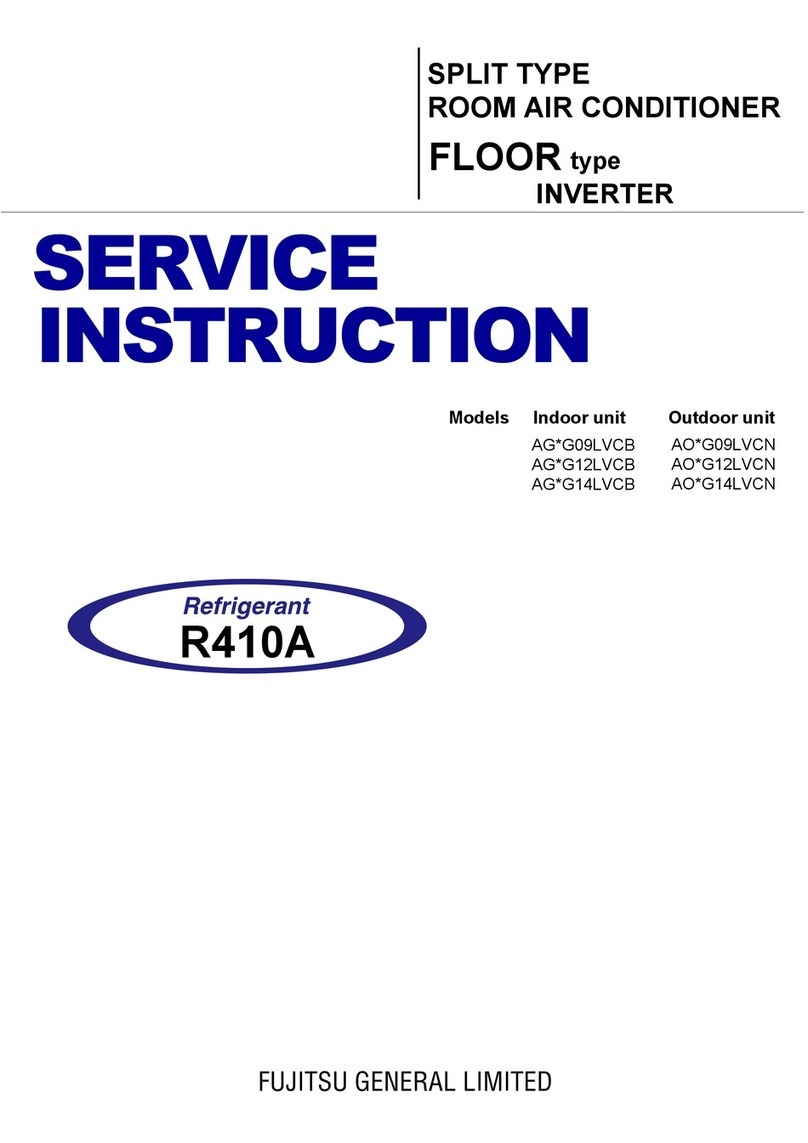
5
DisconnectSwitch—Anelectricallycompatibledisconnect
switch must be within line of sight of the outdoor unit. This
switch shall be capable of electrically de-energizing the
outdoor unit.
Optional Equipment — Optional equipment requiring
connection to the power or control circuits shall be wired in
strict accordance with current provisions of the “National
Electrical Code” (ANSI C1.), with applicable local codes
havingjurisdiction,andtheInstallationInstructionsprovided
with the equipment. Optional Equipment (i.e., liquid line
solenoidvalves, hardstartkits,lowsuction pressurecutout
switch kit, high pressure cutout switch kit, refrigerant
compressor crankcase heater, etc.) should be installed in
strict accordance with the manufacturer’s Installation
Instructions.
8. START-UP AND CHECKOUT
WARNING:
Ensureelectricalpowertotheunitisoffprior to
performingthefollowingsteps. Failuretodoso
may cause personal injury or death.
!
CAUTION:
If equipped with a refrigerant compressor
crankcase heater, allow 24 hours prior to
performing a function checkout to allow for
heatingoftherefrigerantcompressorcrankcase.
Failure to comply may result in damage and
could cause premature failure of the system.
!
Air Filters — Ensure air filters are clean and in place prior
to operating the equipment.
Thermostat — Set the room thermostat function switch to
OFF, fan switch to AUTO, and move the temperature set-
point to it’s highest setting.
Priortoapplyingelectricalpowertotheoutdoorunit,ensure
that the unit has been properly and securely grounded.
Priortoapplyingelectricitytotheoutdoorunit,ensurepower
supply connections have been made at the facility power
interface and at the outdoor unit.
Outdoor Unit — Ensuretheoutdoorcoilandtopof the unit
are free from obstructions and debris, and all equipment
access/control panels are in place.
Functional Checkout:
Split System Air Conditioning equipment
contains liquid and gaseous refrigerant under
pressure. Adjustment of refrigerant charge
should only be attempted by qualified, trained
personnel thoroughly familiar with the
equipment. Under no circumstances should
thehomeownerattempttoinstalland/orservice
this equipment. Failure to comply with this
warning could result in equipment damage,
personal injury, or death.
WARNING:
!
Indoor Blower — Set the thermostat function switch to
“Cooling” and the fan switch to ON or MAN. Verify that the
Indoor Blower is operating and that airflow is not restricted.
Set the fan switch back to Auto.
Cooling—Graduallylowerthethermostattemperatureset-
point below the actual room temperature and observe that
the outdoor unit and indoor blower energize. Feel the air
being circulated by the indoor blower and verify that it is
cooler than ambient temperature. Listen for any unusual
noises. If present, locate and determine the source of the
noise and correct as necessary.
Optional Short Cycle Protection — With the system
operatingin“Cooling”mode,notethetemperaturesettingof
thethermostat,andgraduallyraisetheset-pointtemperature
until the outdoor unit and indoor blower de-energize.
Immediatelylowertheset-pointtemperatureofthethermostat
to it’s original setting and verify that the indoor blower is
energized and that the outdoor unit remains de-energized.
Verify that, after approximately 5 minutes, the outdoor unit
energizesandthatthetemperatureoftheairsuppliedtothe
facility is cooler than ambient temperature.
Heating — If provided with heating equipment, lower the
thermostattemperaturetothelowestobtainablesettingand
set the thermostat function switch to “Heating." The indoor
blower and outdoor unit should stop running. Increase the
set-point temperature of the thermostat to the maximum
setting.Verifythattheheatingequipmenthasbeenenergized
(i.e., fossil fuel burner operating, etc.) and that the indoor
blower energizes after a short period of time. Feel the air
being circulated by the indoor blower and verify that it is
warmer than ambient temperature. Listen for any unusual
noises. If present, locate and determine the source of the
noise and correct as necessary.
Adjustment of Refrigerant Charge:








